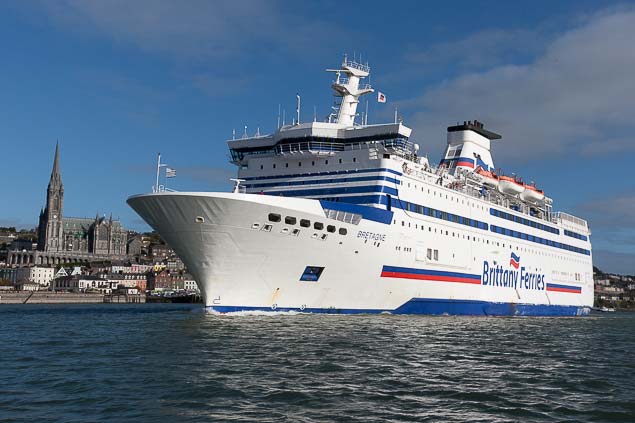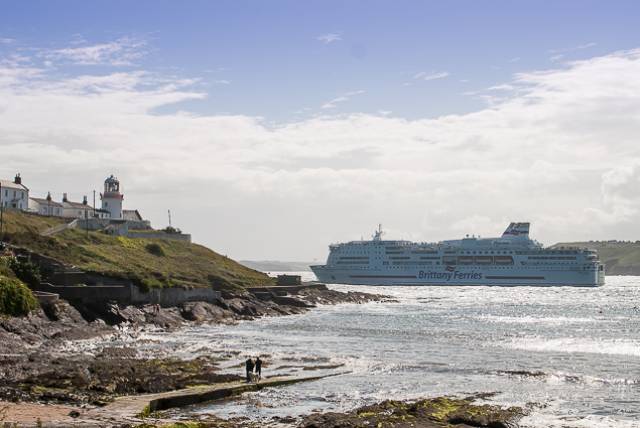In May 1978 Brittany Ferries launched their Cork-Roscoff ferry route from Cork City Quays with their flagship MV ‘Armorique’. At the time, all ferries departing Cork used the passenger terminal at Tivoli, before being transferred downriver to the dedicated Ringaskiddy Ferry Terminal which opened in 1982. Since then the passenger and freight route linking Ireland and France has gone from strength to strength and today the Port of Cork acknowledged this service by wishing Brittany Ferries a Happy 40th Anniversary linking the two countries.
Port of Cork Chairman, John Mullins said: ‘It is with great pleasure that today we wish our long-term customer, Brittany Ferries, a very happy 40th anniversary linking Ireland and France. This company has shown true dedication in providing a reliable and attractive ferry service for both passengers and freight. On behalf of the Port of Cork I would like to congratulate Brittany Ferries on the last the 40 years’ service and wish them every success for the next 40 years.’
 Britanny Ferries Bretagne off Cobh in Cork Harbour Photo: Bob Bateman
Britanny Ferries Bretagne off Cobh in Cork Harbour Photo: Bob Bateman
Over the last 40 years Brittany Ferries have become the market leader on the Western Channel for passengers and freight and in 2018 this commitment was further endorsed when Brittany Ferries announced the first ever ferry service linking Ireland and Spain, with the new Ro-Pax twice-weekly service from Cork to Santander. As well as serving Cork to Santander, this route also delivers an additional weekly return-sailing from Cork to Roscoff.
The new Ro-Pax ferry service was welcomed by the Port of Cork which has brought an increase in Spanish tourism to Cork and provides a very useful connection for exporting freight from Ireland to mainland Europe. This new service, the first direct service from Ireland to Spain, will offer the option for freight carriers and passengers to bypass the UK and French land-bridge to Spain as Brexit uncertainty continues. The Port of Cork hinterland is the key primary pharma, agriculture and food & drink output region in the country. This more efficient supply chain will offer freight customers a direct route to market enabling them to get their produce to market quicker than if they travel through traditional ports.
In 2017, Brittany Ferries carried more than 87,000 passengers, which was an increase of 4% on the previous season and contributing to the national economy. While France continues to be a popular travel destination for Irish travellers, the number of French people visiting Ireland showed no signs of waning as nearly 45,000 availed of the route, representing 52% of all passengers carried.



























































